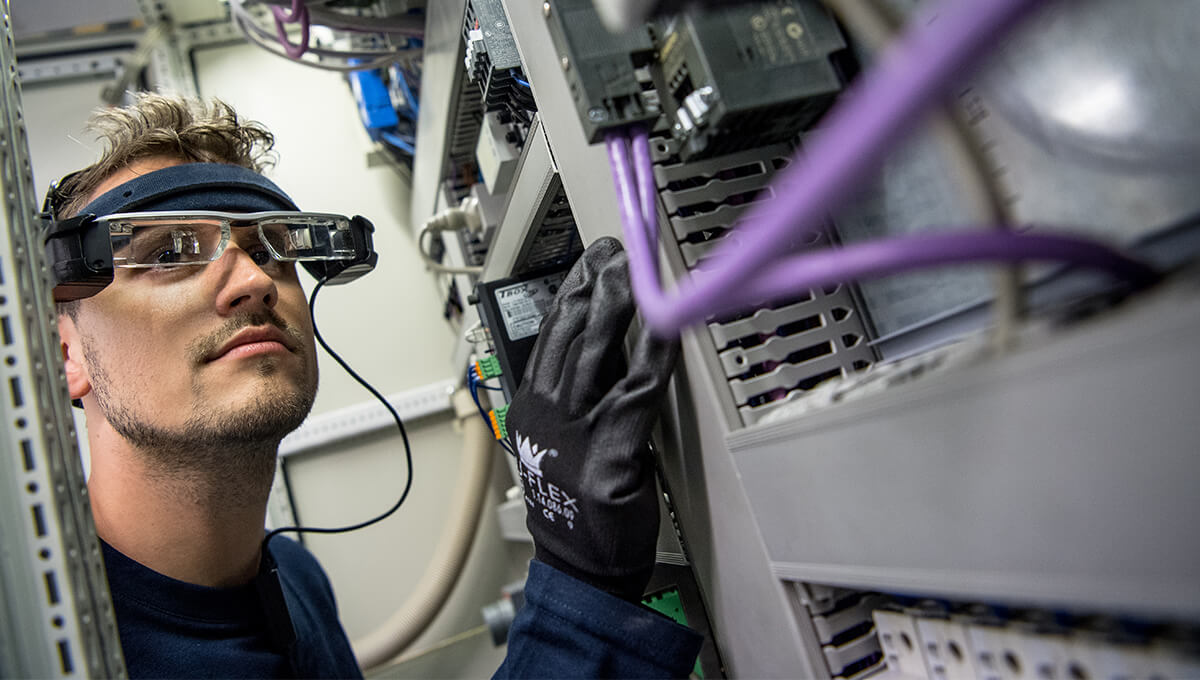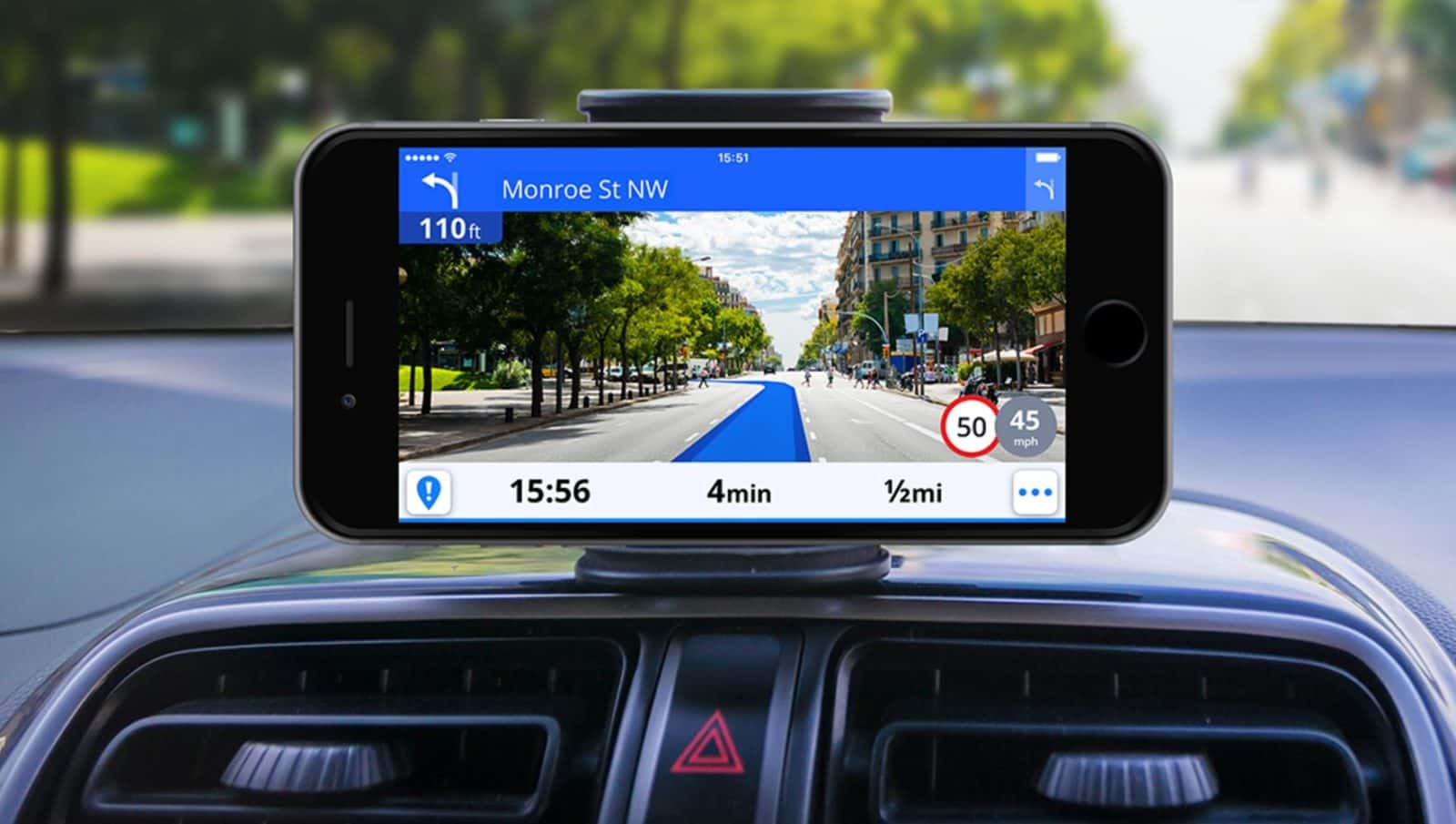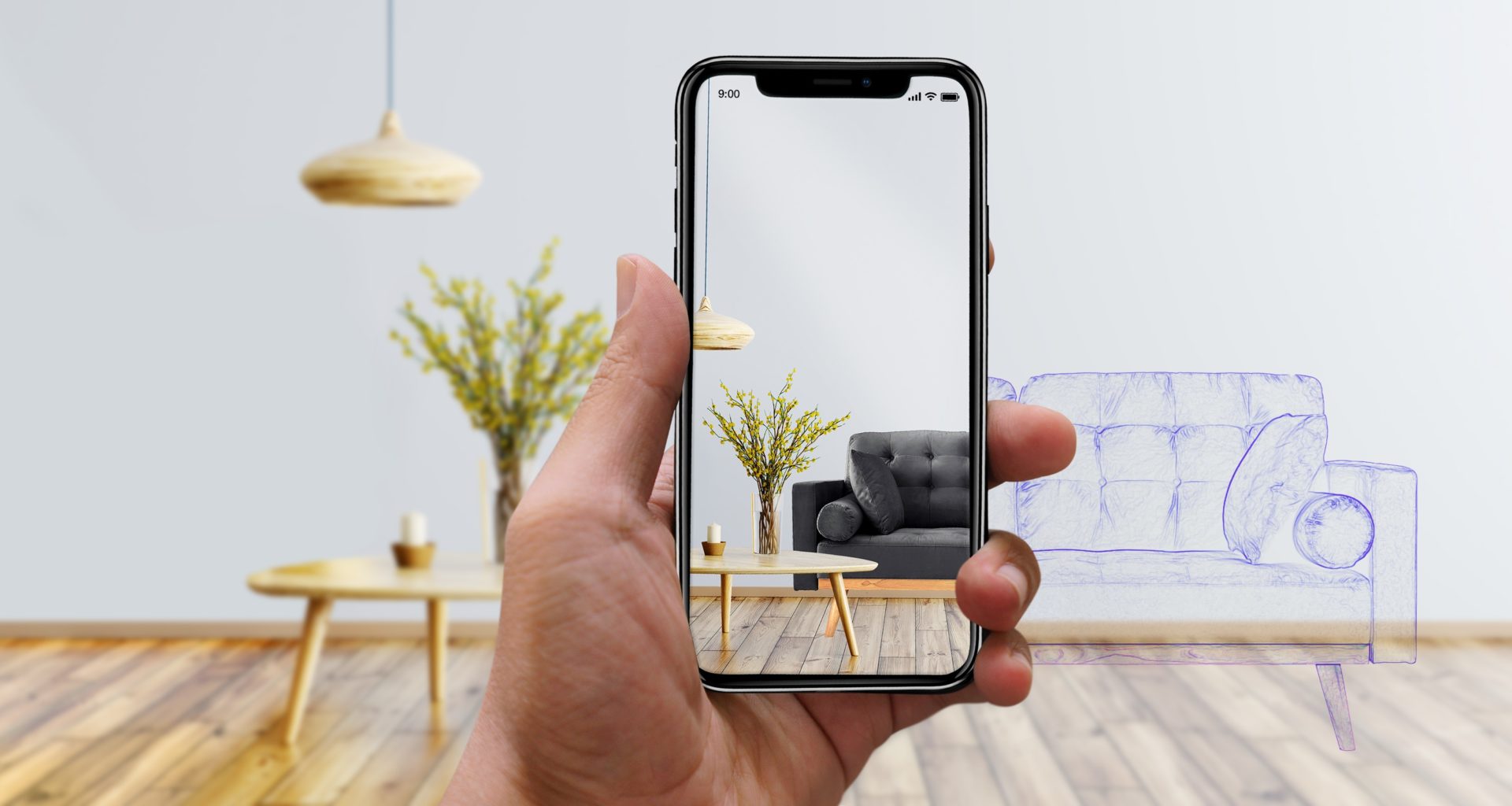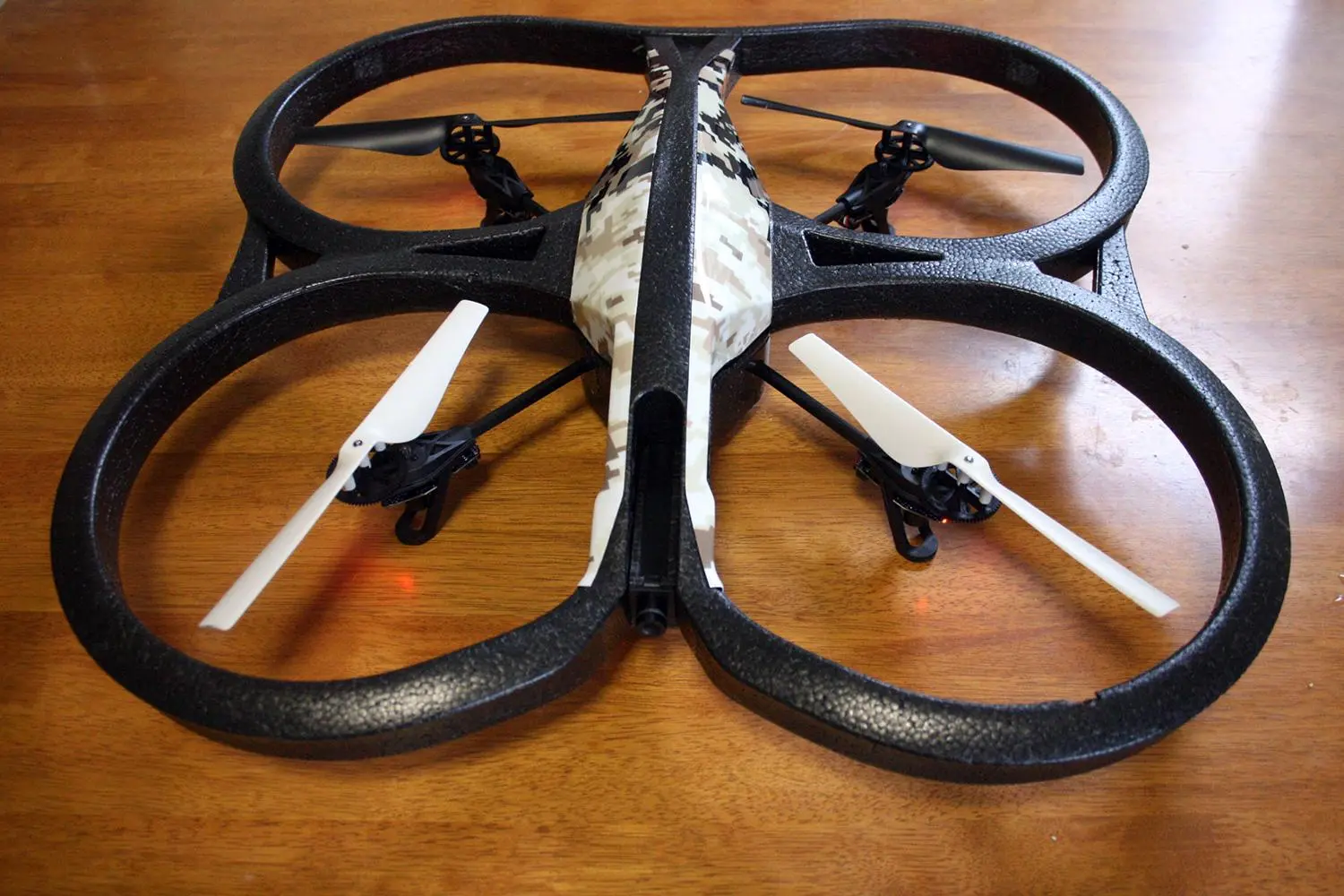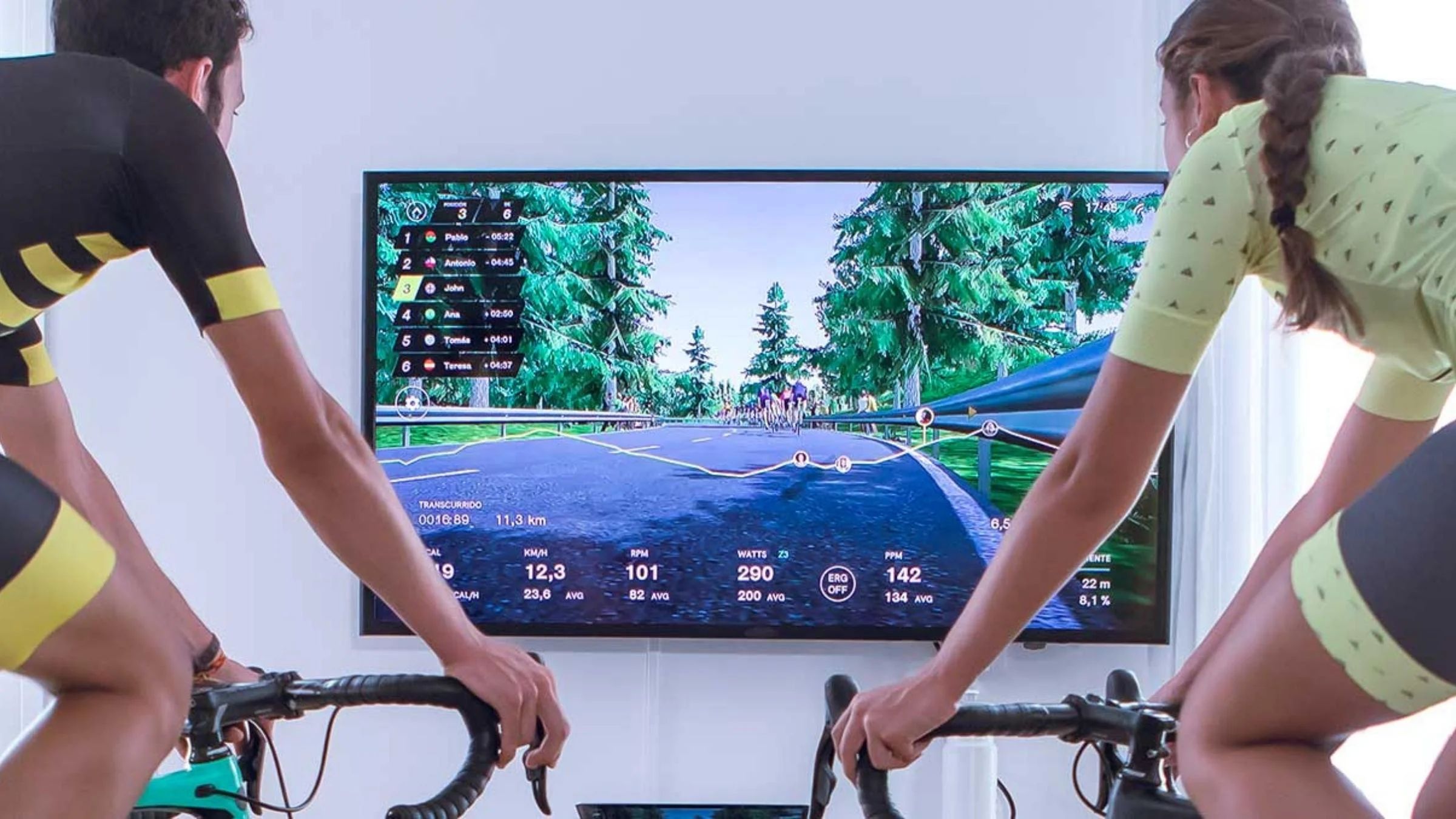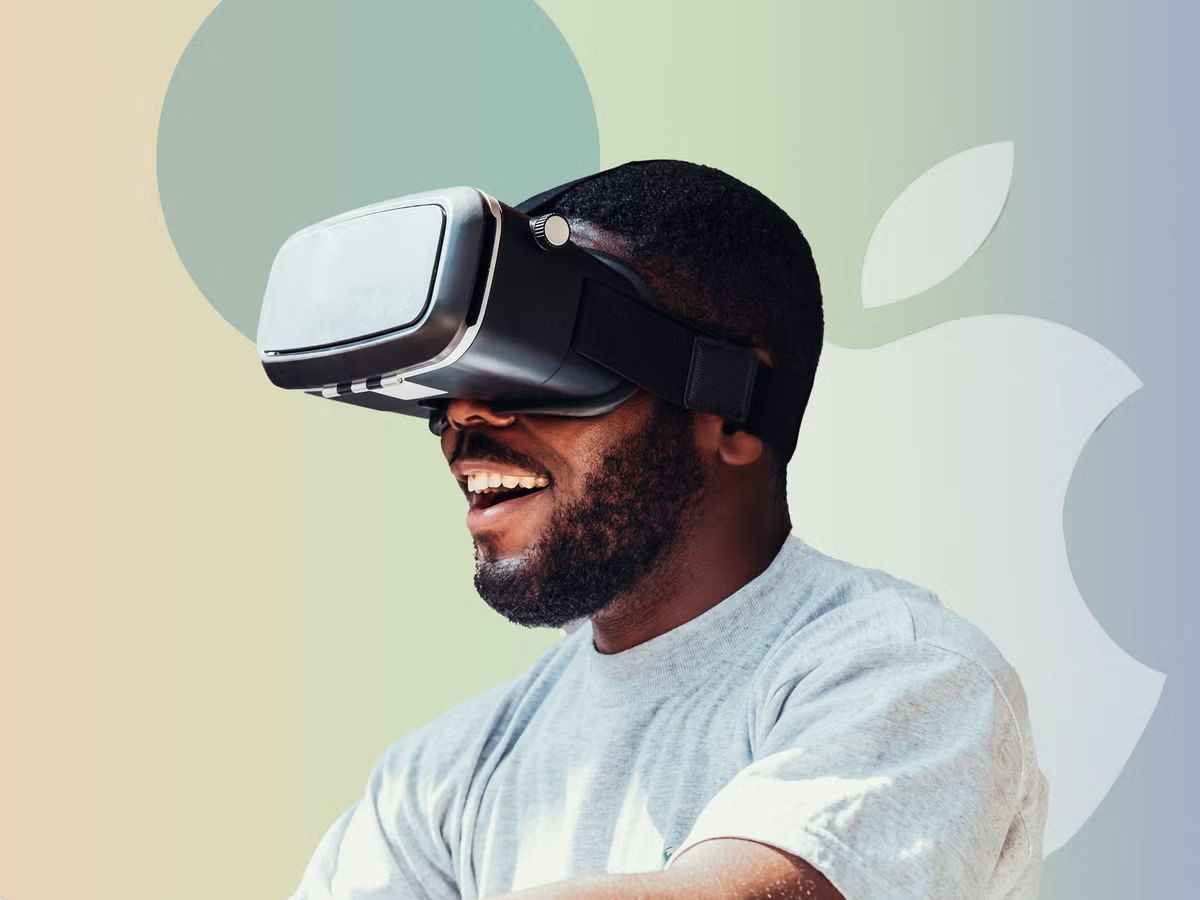Introduction
Augmented Reality (AR) is a revolutionary technology that has the potential to change the world as we know it. It is a concept that brings together the real and virtual worlds, overlaying digital information and computer-generated objects onto the physical environment. AR has gained significant popularity in recent years due to its ability to enhance the way we perceive and interact with the world around us.
Unlike virtual reality, which creates a completely immersive experience in a virtual environment, augmented reality enhances our existing reality by adding digital elements to it. This can be done through various devices, such as smartphones, tablets, smart glasses, and headsets, which use sensors, cameras, and other technological advancements to detect and track the real-world environment.
The key principle behind AR is to provide users with an enhanced perception of reality by adding informative and interactive digital content. This can include text, images, videos, animations, and even 3D models. By seamlessly integrating digital information into the physical world, AR opens up countless possibilities across a wide range of industries and sectors.
From education and healthcare to entertainment and retail, AR has the potential to revolutionize the way we learn, work, play, and shop. It offers immersive and interactive experiences that can engage users in ways never before possible, creating new opportunities for businesses and individuals alike.
Augmented reality technology has already made its way into our daily lives, through popular applications such as Snapchat filters and Pokemon Go. However, its potential extends far beyond simple entertainment and gaming. In the following sections, we will explore the different applications of augmented reality and its impact on various industries.
Definition of Augmented Reality
Augmented Reality (AR) refers to the technology that overlays digital information and virtual objects onto the real world, enhancing our perception and interaction with the physical environment. It blends the virtual and real worlds in real-time, allowing users to seamlessly interact with computer-generated content through devices like smartphones, tablets, smart glasses, and headsets.
In AR, the real-world view is captured by the device’s camera and then augmented with digital content. The device’s sensors, such as GPS, accelerometers, and gyroscopes, help track the user’s position and movement, ensuring that the augmented elements align with the physical world accurately.
AR can provide users with various types of augmented experiences, ranging from simple overlays of text and images to more immersive and interactive 3D models, animations, and videos. The technology empowers users to access additional information, visualize data, and participate in virtual simulations while still maintaining a connection to the real world.
One crucial aspect of augmented reality is its ability to provide contextual information based on the user’s location, environment, and personal preferences. For example, AR applications can display nearby points of interest, provide real-time translations of foreign signs, or offer step-by-step instructions for assembling a product. By augmenting the user’s perception of reality, AR enhances their understanding of the world and facilitates more informed decision-making in various contexts.
It’s important to note that augmented reality should not be confused with virtual reality (VR). While both technologies offer immersive experiences, AR enhances the real world, whereas VR creates entirely simulated environments. In AR, users can still see and interact with the physical world, whereas VR replaces the real-world environment entirely.
The development and adoption of augmented reality have been bolstered by advancements in computing power, graphics, and mobile technology. Today, AR is used in a wide range of applications, including education, healthcare, entertainment, retail, manufacturing, travel, and many other industries. Its potential to enhance human experiences and transform various sectors makes it a truly transformative technology, poised to change the way we interact with the world around us.
How Augmented Reality Works
To understand how augmented reality (AR) works, it is essential to grasp the underlying technologies and processes involved. AR relies on a combination of hardware and software components to seamlessly blend virtual content with the real world. Here’s a breakdown of the key elements that enable augmented reality experiences:
1. Device: AR experiences can be accessed through various devices, including smartphones, tablets, smart glasses, and headsets. These devices typically feature high-resolution displays, cameras, sensors, and processing power necessary for AR applications.
2. Sensors: Built-in sensors, such as GPS, accelerometers, gyroscopes, and depth cameras, gather data about the user’s position, orientation, and movement. This information is crucial for accurately overlaying digital content onto the real world and ensuring a coherent AR experience.
3. Computer Vision: Computer vision algorithms enable devices to understand and interpret the real-world environment. By analyzing visual data from the camera, the device can identify and track objects, surfaces, and markers in real-time. This allows virtual content to be precisely placed and anchored in the physical world.
4. Tracking: Different tracking techniques are used to keep virtual objects aligned with real-world objects and surfaces. Marker-based tracking uses predefined markers or visual cues to establish precise positioning. Markerless tracking relies on natural feature detection and mapping algorithms to track the environment without the need for markers.
5. Augmented Content: AR experiences involve overlaying digital content onto the real world. This content can include text, images, videos, 3D models, animations, and more. Through the device’s display, the augmented content is seamlessly integrated with the user’s real-world view, creating an augmented reality experience.
6. Rendering: The device’s powerful processors render and display the augmented content in real-time as the user moves and interacts with the environment. This ensures a smooth and convincing integration of virtual elements with the real-world view, providing a seamless experience for the user.
By combining these elements, AR creates a mixed reality experience, allowing users to interact with digital content in a real-world context. The technology accurately maps and tracks the environment, aligning virtual objects with real-world surfaces and objects. As users move and interact with the augmented content, the technology adjusts accordingly, offering a dynamic and immersive experience.
Overall, the functioning of augmented reality technology is a complex interplay of hardware, sensors, algorithms, and rendering capabilities. With continued advancements in technology, AR is becoming more accessible and capable of delivering even more interactive and engaging experiences, transforming various industries in the process.
Applications of Augmented Reality
Augmented Reality (AR) has found a multitude of applications across various industries, revolutionizing the way we interact with information, objects, and our surroundings. Here are some key areas where AR is making a significant impact:
1. Education: AR is transforming education by providing immersive and interactive learning experiences. Students can visualize complex concepts through 3D models, explore historical artifacts through virtual exhibits, and engage in virtual simulations to enhance understanding and retention of knowledge.
2. Healthcare: AR is improving healthcare by aiding in medical training, preoperative planning, and surgical navigation. Surgeons can use AR to overlay patient data, imaging scans, and guidance information onto their fields of view, enabling more precise and efficient procedures.
3. Entertainment: AR has revolutionized the entertainment industry by creating engaging and interactive experiences. From augmented reality games like Pokemon Go to immersive AR storytelling experiences, it offers a new level of entertainment and engagement for audiences.
4. Retail: AR is reshaping the retail industry by enhancing the shopping experience. Customers can use AR applications to virtually try on clothes, visualize furniture in their homes before purchase, or access additional product information through interactive displays.
5. Manufacturing: AR is streamlining manufacturing processes by providing real-time guidance and information to workers. It enables technicians to visualize instructions, troubleshoot problems, and access relevant data without the need for physical manuals or constant supervision.
6. Travel and Tourism: AR is transforming the way we explore and experience new destinations. Tourists can use AR applications to access contextual information about landmarks, historical sites, and cultural attractions, enhancing their understanding and enjoyment of their surroundings.
7. Architecture and Design: AR is revolutionizing the way architects, interior designers, and engineers visualize and present their designs. AR allows clients to view virtual models of buildings, walk through virtual spaces, and make real-time design modifications for a more immersive and collaborative design process.
8. Sports: AR is enhancing the sports experience by providing real-time data, player tracking, and immersive viewing options. Fans can access live statistics, view augmented replays, and gain deeper insights into the game, enhancing their overall enjoyment and engagement.
9. Social Media: AR is augmenting social media platforms, offering users interactive filters, effects, and overlays to enhance their photos and videos. It provides a fun and creative way to share moments and express oneself on platforms like Snapchat and Instagram.
These are just a few examples of how augmented reality is transforming industries and enhancing experiences. As AR technology continues to advance, we can expect to see even more exciting applications and innovations in the future.
Augmented Reality in Education
Augmented Reality (AR) is revolutionizing the field of education, transforming traditional learning methods into interactive and immersive experiences. By blending virtual content with the real world, AR technology has the potential to engage students, enhance understanding, and facilitate knowledge retention. Here are some ways AR is being used in education:
Interactive Learning: AR allows students to interact with virtual content, bringing abstract concepts to life. They can explore 3D models, manipulate objects, and visualize complex ideas that are otherwise challenging to grasp through textbooks alone. This hands-on approach promotes active learning and deeper comprehension.
Virtual Field Trips: With AR, students can experience virtual field trips without leaving the classroom. They can virtually explore historical landmarks, visit museums, or even travel to distant locations. This provides opportunities for firsthand virtual experiences that might not be feasible in real life.
Language Learning: AR applications can assist language learners by overlaying translations, pronunciations, and contextual information onto objects and texts. This allows students to practice vocabulary in real-world scenarios and develop their language skills more effectively.
Science and Anatomy: AR brings scientific concepts and anatomy to life by enabling students to examine virtual 3D models of cells, organs, and organisms. They can observe scientific phenomena, conduct virtual experiments, and gain a deeper understanding of complex biological processes.
Historical Simulations: AR can recreate historical events and simulations, allowing students to experience history firsthand. They can witness significant events, interact with historical figures, and explore historical settings, fostering a greater appreciation and understanding of the past.
Collaborative Learning: AR promotes collaboration, as students can interact with virtual objects and engage in group activities. This encourages teamwork, communication, and problem-solving skills development, as they work together to solve AR-based challenges and puzzles.
Special Education: AR offers inclusive learning opportunities for students with special needs. It can provide visual and interactive support, enhancing the accessibility and engagement of educational content for students with different learning styles and abilities.
Skill Development: AR can facilitate skill development by simulating real-world scenarios. For example, students pursuing technical and vocational education can practice hands-on tasks, such as car repairs or construction simulations, in a safe and controlled virtual environment.
By incorporating AR into education, teachers can create dynamic and personalized learning experiences that cater to individual learner needs and interests. Students are actively engaged, motivated, and can explore subjects in a more interactive and immersive manner. AR has the potential to transform education by making learning engaging, accessible, and enjoyable for students of all ages and backgrounds.
Augmented Reality in Healthcare
Augmented Reality (AR) technology has made significant advancements in the healthcare industry, revolutionizing the way medical professionals learn, diagnose, and treat patients. AR offers a range of applications that enhance medical training, surgical procedures, and patient care through immersive and interactive experiences. Here are some key areas where AR is making a significant impact in healthcare:
Medical Education and Training: AR provides medical students and professionals with realistic and interactive training experiences. Through AR simulations, they can practice procedures, anatomy, and diagnostics in a controlled virtual environment. This improves learning retention, allows for repetitive practice, and enhances skill development in a risk-free setting.
Surgical Navigation: AR enables surgeons to visualize and accurately navigate through patient anatomy during surgical procedures. By overlaying patient-specific data, such as MRI or CT scans, onto the surgeon’s field of view, AR enhances precision, reduces the risk of complications, and improves surgical outcomes. It provides real-time guidance, marking critical structures, and aiding in the identification of tumors or blood vessels.
Telemedicine and Remote Consultations: AR enhances telemedicine by allowing remote healthcare providers to have a more immersive and interactive experience when examining patients. By sharing a patient’s view through AR, doctors can offer remote guidance, superimpose annotations, and provide real-time instructions. This enables more accurate and efficient remote consultations, reducing the need for patients to travel and improving access to specialized care.
Patient Education: AR facilitates patient education by visualizing complex medical information in a simplified and interactive manner. Patients can better understand their conditions or procedures by viewing 3D models, animated visuals, or overlaying augmented content onto their own bodies. This enhances communication between healthcare providers and patients, leading to more informed decision-making and higher patient satisfaction.
Rehabilitation and Physical Therapy: AR assists in rehabilitation and physical therapy by providing real-time visual feedback and guidance. Patients can see virtual cues and instructions for correct movements, helping them perform exercises more accurately. AR enhances motivation and engagement during rehabilitation, leading to improved recovery outcomes for patients.
Assisting Complex Procedures: AR aids in complex medical procedures by providing real-time guidance and information. For example, during laparoscopic surgeries, AR can superimpose anatomical landmarks directly onto the patient’s body, assisting in precise instrument placement. This improves surgical accuracy and reduces the risk of complications.
Medical Visualization: AR helps medical professionals visualize medical data, such as radiological imaging, in a more intuitive and interactive manner. By overlaying medical scans onto the patient’s body, doctors can gain a better understanding of the exact location and extent of abnormalities or injuries, facilitating more accurate diagnoses and treatment planning.
Augmented Reality technology is transforming healthcare by enhancing medical education, improving surgical precision, and enhancing patient care. With continued advancements and integration of AR systems into healthcare workflows, we can expect even more exciting applications that will shape the future of medicine.
Augmented Reality in Entertainment
Augmented Reality (AR) has revolutionized the entertainment industry, providing new and immersive experiences for audiences. By blending virtual content with the real world, AR technology has opened up endless possibilities for interactive storytelling, gaming, and visual effects. Here are some key applications of AR in the entertainment sector:
Augmented Reality Gaming: AR gaming has gained significant popularity with games like Pokemon Go and Harry Potter: Wizards Unite. These games allow players to interact with virtual characters and objects in the real world. Through the use of smartphones or AR-enabled headsets, players can explore their surroundings, complete quests, and engage in virtual battles, creating a unique and immersive gaming experience.
Immersive Storytelling: AR is transforming the way stories are told in movies, TV shows, and immersive experiences. By overlaying digital content onto the physical environment, audiences can engage with characters and scenes in an interactive and personalized way. This brings the story to life and creates a deeper emotional connection with the audience.
Live Performances and Concerts: AR enhances live performances and concerts by integrating virtual elements into the real-world setting. Artists can use AR to create stunning visual effects, project virtual stages, or interact with virtual characters. This blurs the line between the performer and the virtual world, providing a captivating and unforgettable experience for the audience.
Theme Parks and Attractions: AR is being used in theme parks and attractions to enhance rides and interactive experiences. Visitors can wear AR glasses or use their smartphones to see virtual elements integrated into the physical environment, creating interactive and immersive attractions.
Augmented Sports Experiences: AR enhances the sports viewing experience by overlaying real-time data, statistics, and visual effects during live broadcasts. Viewers can access player information, replays, and highlight reels, offering a more engaging and interactive experience that goes beyond traditional television broadcasts.
Virtual Fashion and Try-On: AR is transforming the fashion industry by allowing users to virtually try on clothes and accessories. Through AR-enabled apps, users can see how garments fit, match different styles, and make informed purchasing decisions. This personalized and interactive experience enhances the customer’s shopping journey.
Museums and Exhibitions: AR enhances museum and exhibition experiences by providing additional information, interactive exhibits, and virtual tours. Visitors can access detailed information about artifacts, view virtual reconstructions of historical sites, or participate in interactive educational activities, enhancing their understanding and engagement with the exhibits.
AR Marketing and Advertising: AR is used in marketing and advertising campaigns to create interactive and memorable experiences for consumers. Brands can deliver immersive and personalized content through AR-enabled ads, allowing users to visualize products in their own environments or interact with virtual characters and games.
Augmented Reality technology is transforming the entertainment industry by creating immersive, interactive, and personalized experiences for audiences. With continued advancements and innovation, we can expect to see even more exciting applications of AR that will reshape the way we enjoy entertainment.
Augmented Reality in Retail
Augmented Reality (AR) is revolutionizing the retail industry by enhancing the shopping experience for customers and providing innovative solutions for retailers. By seamlessly blending the virtual and physical worlds, AR technology is transforming the way we browse, try on, and purchase products. Here are some key applications of AR in the retail sector:
Virtual Try-On: AR allows customers to virtually try on products before making a purchase. Whether it’s trying on clothes, accessories, or makeup, customers can see how products look on them without physically trying them on. This virtual try-on experience helps customers make more informed buying decisions and reduces the need for physical fitting rooms.
Product Visualization: AR enables customers to visualize products in their own environment before making a purchase. For example, using AR apps, customers can see how furniture would look in their homes, how a new car would fit in their garage, or how appliances would fit in their kitchen. This technology helps customers make more confident choices, reducing product returns and increasing customer satisfaction.
Interactive Shopping Experiences: AR provides interactive and engaging shopping experiences that go beyond traditional retail settings. Virtual showrooms, in-store AR displays, and interactive product demonstrations enhance the overall shopping journey, capturing customer attention and driving brand engagement.
Enhanced Product Information: AR enriches product information by overlaying additional details, specifications, and reviews onto physical products. Customers can scan product labels or barcodes with their smartphones and access comprehensive information, comparisons, and user-generated content. This ensures that customers have all the necessary information to make informed purchasing decisions.
Personalized Recommendations: AR-powered recommendation systems use customer data and preferences to suggest personalized product recommendations. By analyzing customer behavior, purchase history, and preferences, retailers can offer tailored product suggestions and promotions, increasing customer satisfaction and conversion rates.
Improved Customer Support: AR facilitates remote assistance and customer support by connecting customers with experts in real-time. By using AR-enabled apps or devices, customers can virtually connect with customer support representatives who can guide them through troubleshooting, assembly instructions, or product demonstrations, improving customer service and reducing the need for in-person support.
Virtual Shopping Assistants: AR offers virtual shopping assistants that provide personalized recommendations, style advice, and real-time assistance to customers. These assistants use AR technology to interact with customers, understand their preferences, and help them find the right products. This enhances the overall retail experience, offering personalized and tailored support to customers.
Augmented Reality is transforming the retail industry by creating immersive, interactive, and personalized experiences for customers. It enables customers to make informed purchasing decisions, enhances customer engagement, and helps retailers increase sales and customer satisfaction. With continued advancements in AR technology, the future of retail holds even more exciting possibilities for the integration of AR into the shopping experience.
Augmented Reality in Manufacturing
Augmented Reality (AR) is reshaping the manufacturing industry, revolutionizing processes, and improving efficiency. By overlaying virtual information onto the real-world environment, AR technology is transforming the way manufacturing tasks are performed, from assembly and maintenance to quality control and training. Here are some key applications of AR in the manufacturing sector:
Assembly and Manufacturing Processes: AR enhances manufacturing processes by providing real-time visual guidance to workers. By overlaying step-by-step instructions, 3D models, or animations onto their field of view, workers can perform complex assembly tasks with high accuracy. This reduces errors, improves productivity, and shortens training times for new employees.
Maintenance and Repair: AR is used for maintenance and repair tasks by overlaying virtual information onto machines and equipment. Technicians can access maintenance procedures, schematics, and diagnostic data directly through AR-enabled devices. This speeds up troubleshooting, reduces downtime, and improves the efficiency of maintenance and repair activities.
Quality Control: AR enhances quality control processes by providing visual aids and real-time feedback to inspectors. AR can overlay virtual indicators, measurements, or comparisons onto physical products or components, highlighting any defects or deviations from the desired specifications. This ensures consistent quality and reduces the risk of faulty products reaching the market.
Training and Skill Development: AR enables immersive and hands-on training experiences for manufacturing employees. New employees can undergo virtual simulations and interactive exercises to familiarize themselves with the manufacturing processes and equipment. AR-based training enhances skill development, reduces training costs, and improves employee performance.
Inventory Management: AR improves inventory management through real-time visibility and tracking of products and components. Using AR-enabled devices, workers can easily locate and identify products on shelves, scan barcodes or QR codes, and access inventory information. This streamlines inventory tracking, reduces errors, and improves overall supply chain efficiency.
Collaborative Workflows: AR facilitates collaboration and communication among team members working on complex manufacturing projects. By using AR-enabled devices, workers can share virtual annotations, drawings, or instructions onto the real-world environment. This facilitates remote collaboration, reduces errors, and improves coordination among team members.
Safety Enhancements: AR improves safety in manufacturing environments by overlaying virtual warnings, safety guidelines, and equipment usage instructions. Workers can receive real-time notifications of potential hazards, safety protocols, or equipment shutdown procedures. This enhances worker safety, reduces accidents, and ensures compliance with safety regulations.
Overall, Augmented Reality is transforming the manufacturing industry by improving productivity, efficiency, and safety. By integrating virtual information into the physical workspace, AR enhances manufacturing processes, training, quality control, and collaboration. As AR technology continues to evolve, we can expect even more exciting applications and advancements in the manufacturing sector.
Augmented Reality in Travel and Tourism
Augmented Reality (AR) has emerged as a game-changer in the travel and tourism industry, revolutionizing the way people explore and experience new destinations. By overlaying digital content onto the real world, AR technology enhances the travel journey, offering immersive and interactive experiences for tourists. Here are some key applications of AR in the travel and tourism sector:
Virtual Tours and Sightseeing: AR allows tourists to take virtual tours and explore landmarks and attractions before visiting them physically. Using AR-enabled devices, visitors can access contextual information, historical facts, and engaging multimedia content about the places they are visiting. This enhances their understanding and appreciation of the destinations.
Foreign Language Translation: AR assists travelers in overcoming language barriers by providing real-time translations of signs, menus, and other written text. Through AR-enabled apps, users can point their cameras at foreign language text and receive instant translations, making it easier to navigate and communicate in unfamiliar environments.
Interactive Travel Guides: AR-powered travel guides offer interactive and personalized recommendations based on a traveler’s location, preferences, and interests. These guides provide information about nearby attractions, restaurants, and activities, offering a customized itinerary for the traveler. AR-enhanced guides make exploring new destinations more engaging and efficient.
Historical and Cultural Context: AR provides historical and cultural context to tourist attractions and landmarks. Using AR, visitors can view virtual reconstructions of historical sites, see how they looked in the past, and access information about their significance. This creates a more immersive and educational experience for travelers.
Interactive Museum Exhibits: AR transforms museum visits by overlaying additional information and interactive elements onto exhibits. Visitors can use AR-enabled devices to access multimedia content, 3D models, and interactive displays that provide in-depth details about artifacts, paintings, or sculptures. This enhances engagement and understanding of the exhibited pieces.
Navigation and Directions: AR simplifies navigation for travelers by offering real-time directions, maps, and navigational cues. Travelers can use AR apps to visualize pathways and receive turn-by-turn instructions, ensuring they can easily navigate and reach their desired destinations, even in unfamiliar surroundings.
Virtual Souvenir Shopping: AR facilitates virtual shopping experiences for travelers by superimposing virtual products onto physical spaces. Tourists can use AR apps to see how souvenirs, clothing, or accessories would look on them, eliminating the need to carry physical items during their travels. AR shopping experiences offer convenience and a unique way to commemorate their trips.
Augmented Reality is transforming the travel and tourism industry, enhancing tourists’ experiences by offering immersive, informative, and interactive components. AR enables travelers to explore destinations in new ways, access real-time information, and gain a deeper understanding of the local culture and history. With the continued advancements in AR technology, we can expect even more exciting and transformative applications in the travel and tourism sector.
Augmented Reality in Architecture and Design
Augmented Reality (AR) is revolutionizing the fields of architecture and design, transforming the way professionals visualize, plan, and present their projects. By overlaying virtual elements onto the physical environment, AR technology enhances spatial understanding, facilitates collaboration, and improves the design process. Here are some key applications of AR in architecture and design:
Visualization of Design Concepts: AR allows architects and designers to bring their ideas to life by creating virtual models and visualizations of architectural designs. Using AR-enabled devices, professionals and clients can walk through virtual environments, see how designs integrate into real-world spaces, and make informed decisions about design elements and aesthetics.
Real-Time Design Modifications: AR facilitates real-time design modifications and iterative processes. Using AR tools, architects and designers can make on-the-spot changes to their designs, instantly visualizing the impact of modifications. This streamlines the design process and improves communication with clients and stakeholders.
Virtual Furniture and Interior Design: AR allows designers and clients to visualize furniture and interior design elements in real-time. By overlaying virtual furniture onto physical spaces, designers can showcase different styles and configurations, helping clients make informed decisions on interior design choices.
Simulations and Space Planning: AR enables architects and designers to simulate and plan spatial layouts with ease. By overlaying virtual walls, objects, and fixtures, professionals can accurately assess spatial proportions, circulation, and usage. This helps avoid costly errors and ensures optimal space utilization.
Site Analysis and Surveying: AR simplifies site analysis and surveying processes. By overlaying digital data onto real-world environments, architects and engineers can assess site conditions, analyze topography, and troubleshoot potential design challenges before construction. This improves efficiency and accuracy during the planning phase of projects.
Collaborative Design Reviews: AR promotes collaboration and stakeholder engagement by enabling real-time design reviews. Using AR-enabled devices, team members and clients can virtually walk through architectural designs, leave feedback, and make suggestions. This fosters collaboration, reduces misunderstandings, and ensures all stakeholders have a clear understanding of the proposed designs.
Historical Reconstructions and Preservation: AR aids in historical reconstructions and preservation projects. By overlaying virtual reconstructions onto existing structures, architects can present historical contexts and reveal the historical significance of buildings, enhancing the understanding and appreciation of architectural heritage.
Client Presentations and Marketing: AR enhances client presentations and marketing efforts by creating immersive and interactive experiences. AR allows clients to experience architectural designs in 3D, tour virtual spaces, and understand design elements in a more intuitive manner. This improves client engagement and helps secure project approvals.
Augmented Reality is transforming the architecture and design industries by enhancing visualization, improving communication, and streamlining the design process. AR empowers professionals to create immersive and realistic experiences, engage clients and stakeholders, and make more informed design decisions. As AR technology continues to advance, we can expect even more exciting and transformative applications in architecture and design.
Augmented Reality in Sports
Augmented Reality (AR) is revolutionizing the world of sports, enhancing the viewing experience for fans and providing advanced tools for athletes and coaches. By overlaying virtual elements onto the physical game environment, AR technology is transforming how sports are played, observed, and analyzed. Here are some key applications of AR in sports:
Fan Engagement: AR enhances fan engagement by providing interactive and immersive experiences during live sports events. Fans can use AR-enabled apps or devices to access real-time player statistics, replays, and in-depth analysis. AR overlays virtual elements onto the live broadcast, enriching the viewing experience and providing fans with more insights and excitement.
Player Training and Performance Analysis: AR aids in player training and performance analysis by overlaying virtual markers, statistics, and visual cues onto the field or court. Athletes can use AR to analyze their movements, track performance metrics, and receive real-time feedback on technique and strategy. This improves training effectiveness and helps athletes spot areas for improvement.
Virtual Coaching: AR enables virtual coaching experiences for athletes by superimposing instructions and demonstrations onto their field of view. Coaches can use AR-enabled devices to guide athletes in real-time, providing visual cues and interactive instructions during training sessions or games. This enhances communication and helps athletes make split-second decisions.
Player Tracking and Analysis: AR allows for player tracking and analysis by displaying real-time player data and statistics in a visually intuitive manner. AR overlays virtual overlays on players, highlighting their movements, speed, and positioning. This data helps teams and coaches make informed decisions, devise strategies, and adjust tactics during games.
Enhanced Sports Broadcasts: AR enhances sports broadcasts by overlaying virtual graphics and visual effects onto the live footage. This can include real-time statistics, replays, and visualizations of game dynamics. AR-powered broadcasts enhance viewers’ understanding and enjoyment of the game, providing a more interactive and immersive viewing experience.
Augmented Reality for eSports: AR is transforming the world of eSports by integrating virtual elements into live gaming broadcasts and competitions. AR can overlay virtual interfaces, player statistics, and animations directly onto the gaming environment, enhancing the viewing experience and providing a deeper understanding of the gameplay for spectators.
Referee Decision-Making: AR assists referees in making accurate and fair decisions by providing additional perspectives and information. Technology such as goal-line technology or virtual overlays can help determine if a goal has been scored or if a decision needs to be reviewed. This ensures fair play and reduces controversies in sports.
Fan Interaction and Gaming: AR provides opportunities for fans to engage with their favorite sports teams and players through interactive games and experiences. Fans can use AR apps to participate in virtual games, take selfies with augmented players, or even compete with virtual versions of their favorite athletes. This adds an extra element of fun and excitement to the fan experience.
Augmented Reality is transforming the sports industry by enhancing fan engagement, providing advanced training tools for athletes, and revolutionizing the way sports are broadcasted and consumed. AR technology offers new dimensions of interaction, analysis, and enjoyment, creating more immersive and engaging experiences for sports fans and athletes alike.
Augmented Reality and Social Media
Augmented Reality (AR) has become increasingly integrated into social media platforms, offering users unique and interactive ways to engage with their online communities. By overlaying digital content onto the real world, AR enhances social media experiences, allowing users to express themselves creatively and connect with others in exciting and immersive ways. Here are some key applications of AR in the realm of social media:
AR Filters and Effects: AR-powered filters and effects have become a popular feature on social media platforms. Users can apply virtual masks, animations, or overlays to their photos and videos, transforming their appearance or adding a touch of creativity to their content. AR filters and effects offer a fun and interactive way to express oneself and engage with followers.
Virtual Try-On: AR enables virtual try-on experiences for beauty products, accessories, and even clothing. Users can virtually test out different looks, hairstyles, or makeup styles, helping them make more informed decisions about their purchases. This immersive and interactive feature enhances the shopping experience and contributes to user-generated content on social media.
AR Games and Challenges: Social media platforms often incorporate AR games and challenges to engage users and create a sense of community. Users can participate in augmented reality scavenger hunts, quizzes, or interactive challenges, encouraging them to share their experiences and compete with friends. These AR-driven games and challenges foster social interaction and generate user-generated content.
Location-Based AR Experiences: AR leverages location data to offer unique location-based experiences. Users can discover AR overlays, information, or hidden virtual elements when visiting specific landmarks, events, or even retail stores. This integration of AR and social media allows users to share their augmented experiences and recommendations with their followers, creating a more interactive and dynamic social media presence.
Interactive Advertising: AR enhances advertising on social media platforms by enabling interactive and immersive experiences for users. Brands can create AR-powered advertisements that allow users to explore products in 3D, try on virtual samples, or visualize how products would fit into their lives. This interactive advertising approach contributes to higher engagement and provides a more personalized and memorable experience for users.
Virtual Events and Live Streaming: AR is used to enhance virtual events and live streaming experiences on social media platforms. AR overlays virtual elements, such as graphics, animations, or interactive displays, onto live videos, making the content more engaging and visually appealing. AR-powered virtual events and live streaming improve user experience and enable more dynamic and interactive content sharing.
AR Shopping Experiences: Social media platforms integrate AR to provide virtual try-on experiences or product visualization within the shopping experience. Users can see how products would look in their space, virtually try on clothes, or preview home decor items before making a purchase. AR shopping experiences on social media platforms bridge the gap between online shopping and the physical world, providing greater convenience and a more immersive e-commerce experience.
Augmented Reality has transformed social media by offering new creative tools, interactive experiences, and innovative ways to connect with others. With continued advancements in AR technology, we can expect social media platforms to further integrate augmented reality features, allowing users to express themselves, engage with their communities, and share unique and immersive experiences with their followers.
The Impact of Augmented Reality on Business
Augmented Reality (AR) is having a profound impact on businesses across various industries, reshaping customer experiences, improving operational efficiency, and driving innovation. By blending the virtual and physical worlds, AR technology offers new opportunities for businesses to engage customers, streamline processes, and unlock new avenues for growth. Here are some key impacts of augmented reality on businesses:
Enhanced Customer Engagement: AR enhances customer engagement by providing interactive and immersive experiences. Businesses can incorporate AR into marketing campaigns, product launches, or in-store experiences to captivate customers and create a lasting impact. AR-powered apps or devices enable customers to visualize products, try on virtual samples, or access additional information, deepening their engagement and increasing the likelihood of conversion.
Improved Sales and Conversion Rates: AR has been shown to improve sales and conversion rates for businesses. By incorporating AR into the shopping process, customers can make more informed purchasing decisions, resulting in higher conversion rates. AR also boosts cross-selling and upselling opportunities by providing personalized recommendations and visualizing product combinations, ultimately driving higher sales for businesses.
Enhanced Product Development and Design: AR facilitates product development and design by enabling rapid prototyping, visualizations, and virtual simulations. Businesses can use AR technology to create virtual product models, test design iterations, and receive real-time feedback from stakeholders. This streamlines the product development cycle, reduces costs, and minimizes the risks associated with physical prototyping.
Efficient Training and Skills Development: AR improves training and skills development for employees. By integrating AR into training programs, businesses can offer immersive and interactive experiences, enabling employees to learn and practice new tasks in a realistic and safe virtual environment. This leads to faster onboarding, improved productivity, and enhanced skills development for employees.
Streamlined Operations and Processes: AR enhances operational efficiency by streamlining processes and reducing human errors. AR-enabled workflows provide real-time guidance, instructions, and overlays, improving task execution accuracy and reducing the need for constant supervision. AR also facilitates remote collaboration and troubleshooting, allowing businesses to solve problems faster and with greater efficiency.
Improved Maintenance and Repairs: AR assists in maintenance and repair activities by providing real-time visualizations, instructions, and annotations. Technicians can use AR to overlay digital information on physical equipment, guiding them through maintenance procedures and reducing downtime. AR improves troubleshooting efficiency, enhances accuracy, and extends the lifespan of equipment, ensuring smooth operations for businesses.
Data Visualization and Analytics: AR transforms the way businesses visualize and analyze data. By overlaying data visualizations onto real-world environments, businesses can gain insights and make data-driven decisions more intuitively. AR-powered analytics offer dynamic and interactive visual representations of data, enabling businesses to identify patterns, trends, and actionable insights more effectively.
Competitive Advantage and Differentiation: Businesses that embrace AR gain a competitive advantage and differentiation in the marketplace. AR-powered customer experiences, innovative applications, and streamlined processes set businesses apart from competitors and attract discerning customers who seek immersive and interactive engagement. Early adoption of AR technology positions businesses as industry leaders, driving growth and capturing market share.
Overall, Augmented Reality is transforming the business landscape, empowering organizations to deliver enhanced customer experiences, improve operational efficiency, and drive innovation. As AR technology continues to advance, businesses are encouraged to explore its potential and leverage its capabilities to thrive in an increasingly digital and immersive world.
Challenges and Limitations of Augmented Reality
While Augmented Reality (AR) offers numerous benefits and exciting possibilities, it also presents certain challenges and limitations that businesses and developers need to address. Understanding these challenges is crucial for effectively harnessing the potential of AR technology. Here are some key challenges and limitations of augmented reality:
Hardware Limitations: AR experiences rely on the performance and capabilities of the hardware devices used, such as smartphones, tablets, or smart glasses. Current limitations include limited processing power, battery life, and field of view. Overcoming these limitations will require advancements in hardware technology to deliver more immersive and seamless AR experiences.
User Interface and Experience: Designing intuitive and user-friendly interfaces for AR experiences can be challenging. Balancing the integration of real-world and virtual content, optimizing the user experience, and providing clear instructions within the AR environment requires careful consideration. Designers and developers need to eliminate complexity and make interactions seamless to ensure a smooth AR experience.
Content Creation and Integration: Developing and integrating high-quality AR content can be time-consuming and resource-intensive. Creating accurate 3D models, textures, and animations requires specialized skills and tools. Additionally, integrating AR content into existing workflows and systems can pose technical challenges, requiring collaboration between different teams and technologies.
Privacy and Security: AR applications often rely on user data, such as location information or personal preferences. Ensuring the privacy and security of this data is crucial to maintaining user trust. Developers must take appropriate measures to protect user information and be transparent about data collection and usage to address privacy concerns.
Technical Limitations: AR technology still faces technical limitations, such as accurate tracking in various lighting conditions or complex environments. Tracking errors or inaccuracies can disrupt the AR experience, affecting the realism and functionality of virtual overlays. Continuous advancements in computer vision and sensing technologies are needed to overcome these limitations.
Costs and Accessibility: AR hardware devices and development tools can be costly, limiting accessibility for many businesses and users. Affordability and accessibility remain important considerations to drive wider adoption of AR technology. As economies of scale improve and demand grows, the costs associated with AR hardware and development may decrease, making it more accessible for businesses and individuals.
User Acceptance and Adoption: While AR is gaining popularity, broader user acceptance and adoption can still be a challenge. The concept of overlaying virtual content onto the real world can be unfamiliar or intimidating to some users. Educating and familiarizing users with AR technology, along with providing compelling use cases and experiences, can drive wider acceptance and adoption.
Integration and Standards: AR technology is evolving rapidly, which can result in fragmentation and the lack of standardized platforms and tools. This can present integration challenges, as compatibility across different AR systems may be limited. Establishing industry standards and interoperability will be essential to ensure seamless integration and widespread adoption of AR.
Despite these challenges and limitations, the potential of AR technology is vast. Continued advancements, industry collaboration, and innovation will address these challenges, making AR more accessible, cost-effective, and scalable. Overcoming these limitations will open up new opportunities for businesses and individuals to leverage the power of augmented reality across a wide range of industries and use cases.
Conclusion
Augmented Reality (AR) is a transformative technology that is revolutionizing various industries and reshaping the way we interact with the world. By overlaying digital content onto the physical environment, AR enhances our experiences, engages our senses, and enables us to interact with virtual elements in real-time. The impact of AR can be seen across education, healthcare, entertainment, retail, manufacturing, travel, architecture, sports, and social media.
AR offers exciting possibilities for businesses and individuals alike. It enhances customer engagement, improves operational efficiency, and drives innovation. Businesses can leverage AR to create immersive and personalized customer experiences, streamline processes, and gain a competitive edge. From virtual try-on experiences in retail to virtual training simulations in manufacturing, AR enables businesses to provide interactive and engaging experiences that captivate their audience.
However, along with the benefits, there are also challenges and limitations to consider. Hardware limitations, user interface design, content creation, privacy concerns, and technical constraints are some of the challenges that need to be addressed to fully unlock the potential of AR. Additionally, user acceptance and adoption, as well as the cost and accessibility of AR technology, remain important factors in its widespread adoption.
Despite these challenges, AR continues to evolve, and advancements in technology are addressing many of the limitations. As AR hardware becomes more powerful and affordable, and as more businesses and individuals embrace this technology, we can expect to see even more innovative and practical applications of AR in the future.
In conclusion, augmented reality is transforming the way we live, work, and interact. It offers immense potential to enhance our experiences, from education and healthcare to entertainment and shopping. By embracing the opportunities that AR presents, businesses and individuals can unlock new frontiers of creativity, productivity, and engagement, leading to a future where the boundaries between the physical and virtual worlds continue to blur.











